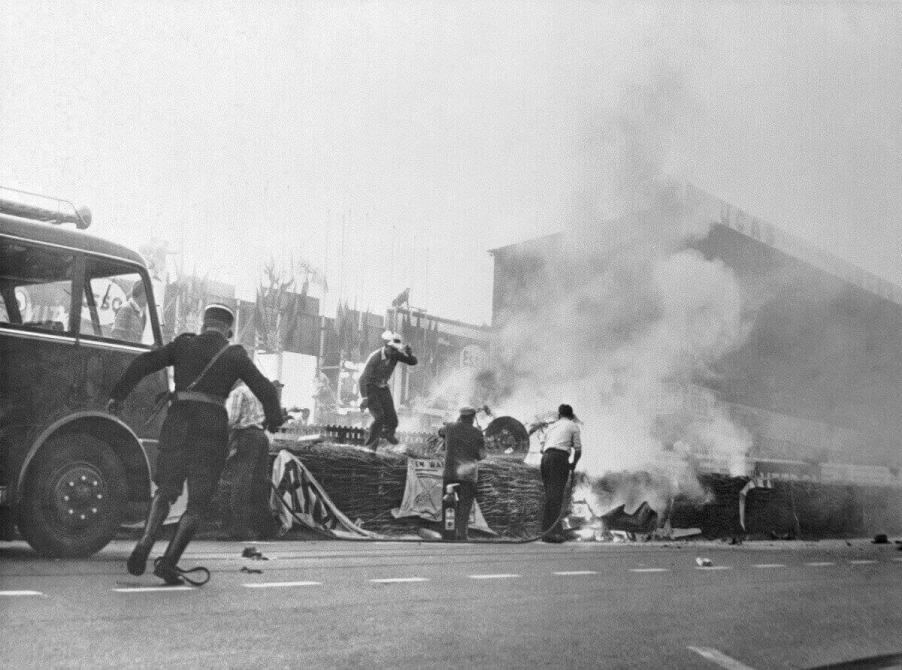
The Worst Accident in Motorsport History Might Send Shivers Down Your Spine
No one saw it coming: an explosive mishap at the 1955 24 Hours of Le Mans that would go down as the deadliest accident in motorsport history. What started as a typical pomp-and-frills endurance race in the French countryside ended with an alarming death toll and a tragic black eye for racing. The 1955 Le Mans disaster was a nightmare, but it didn’t kill the sport that continues to captivate spectators and fans today.
What is the deadliest crash in racing history?
The deadliest accident in racing history happened on June 11, 1955, when an airborne Mercedes-Benz 300 SLR soared into a crowd of spectators. Tragically, the V8-powered Mercedes exploded, sending fiery fragmentation into the masses. It was the most unsurvivable of conditions.
In “Go Like Hell,” A.J. Baime’s book about the fabled 1960s feud between Ford and Ferrari, Baime says that the 300 SLR’s magnesium alloy body reacted horrifically with the white-hot flames. It melted and burned. Of course, as many racing fans know, magnesium is a highly flammable metal. In fact, some survivalists use magnesium as a fire starter.
The result? The 3,000-lb open-top Mercedes was more missile than machine, causing unimaginable carnage and, potentially, the end of motorsport. After the investigations ended, 82 spectators had perished, and hundreds more were injured, per Le Monde. It is, by a wide margin, the worst loss of life of any motorsport event on record.
What caused the 1955 Le Mans crash?
Pierre Levegh, then 50 years old, piloted the fateful Mercedes-Benz 300 SLR in the 1955 Le Mans disaster. Around two-and-a-half hours into the 24-hour motorsport event, Levegh was locked in battle with Mike Hawthorn’s Jaguar and Lance Macklin’s Austin Healey. Hawthorn pulled toward the pit, cutting off Macklin and prompting Levegh to make contact while avoiding the braking Austin Healey.
Unfortunately, the collision with the Austin Healey’s rear end sent the Mercedes into the crowd. However, while high-speed wrecks were commonplace in classic motorsport, this was a cacophony of unfortunate circumstances. The car turned into an airborne fireball, and Levegh, along with many spectators, lost their lives.
How dangerous is being a race car driver?

Racing cars is inherently dangerous. Even with the latest regulations, engineering, and safety equipment, cars are faster than ever. In fact, some F1 drivers, commonly regarded as the finest racing drivers in the world, voice their safety concerns regularly.
Is Le Mans more dangerous than other motorsport events?

Le Mans operates in different segments for as long as 24 hours. As a result, the historic motorsport event subjects racers to higher levels of fatigue and larger starting grids than other races. Consequently, Le Mans routinely has double-digit crash figures by the end of the event.
Keep up with MotorBiscuit for the latest automotive history and racing content!



